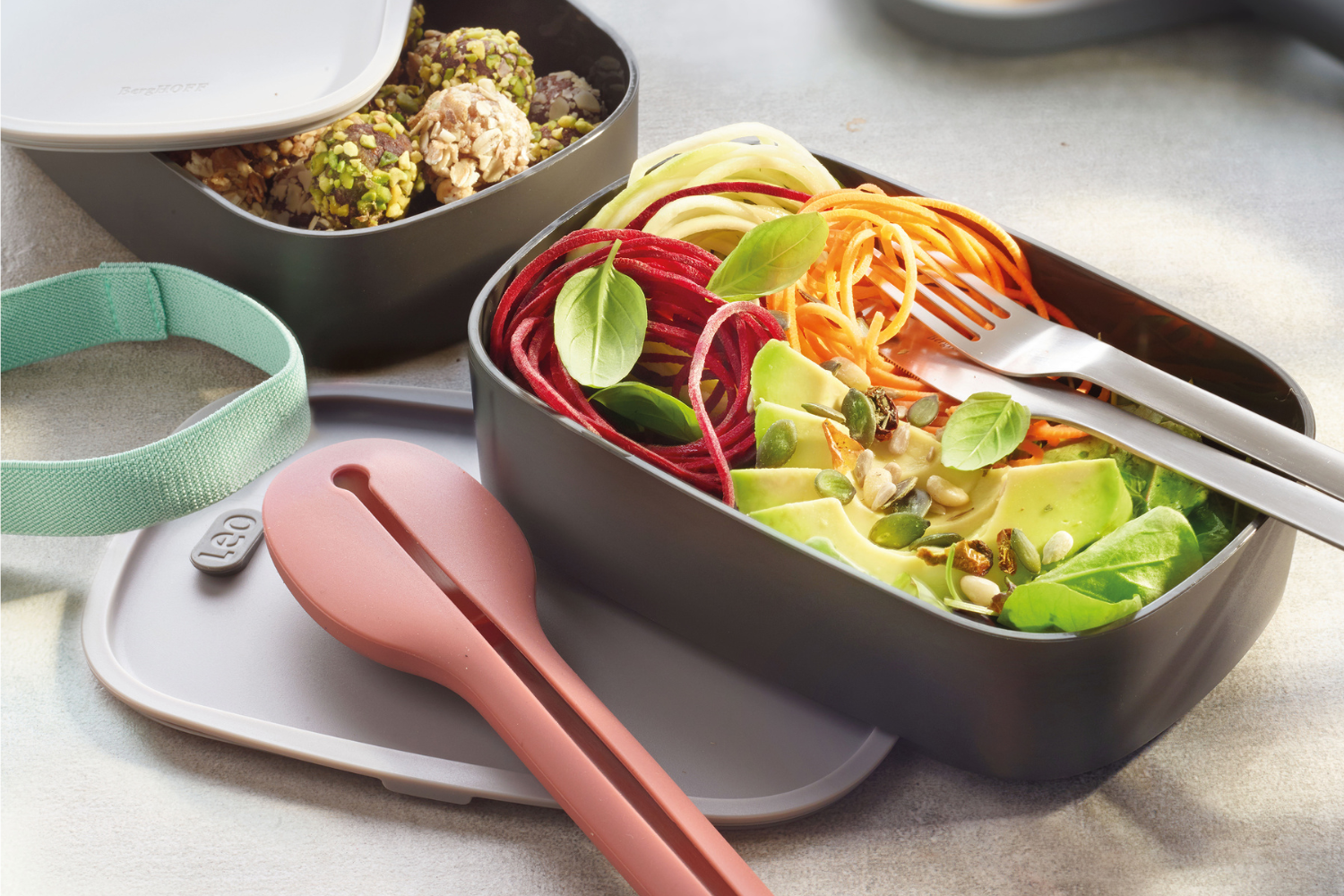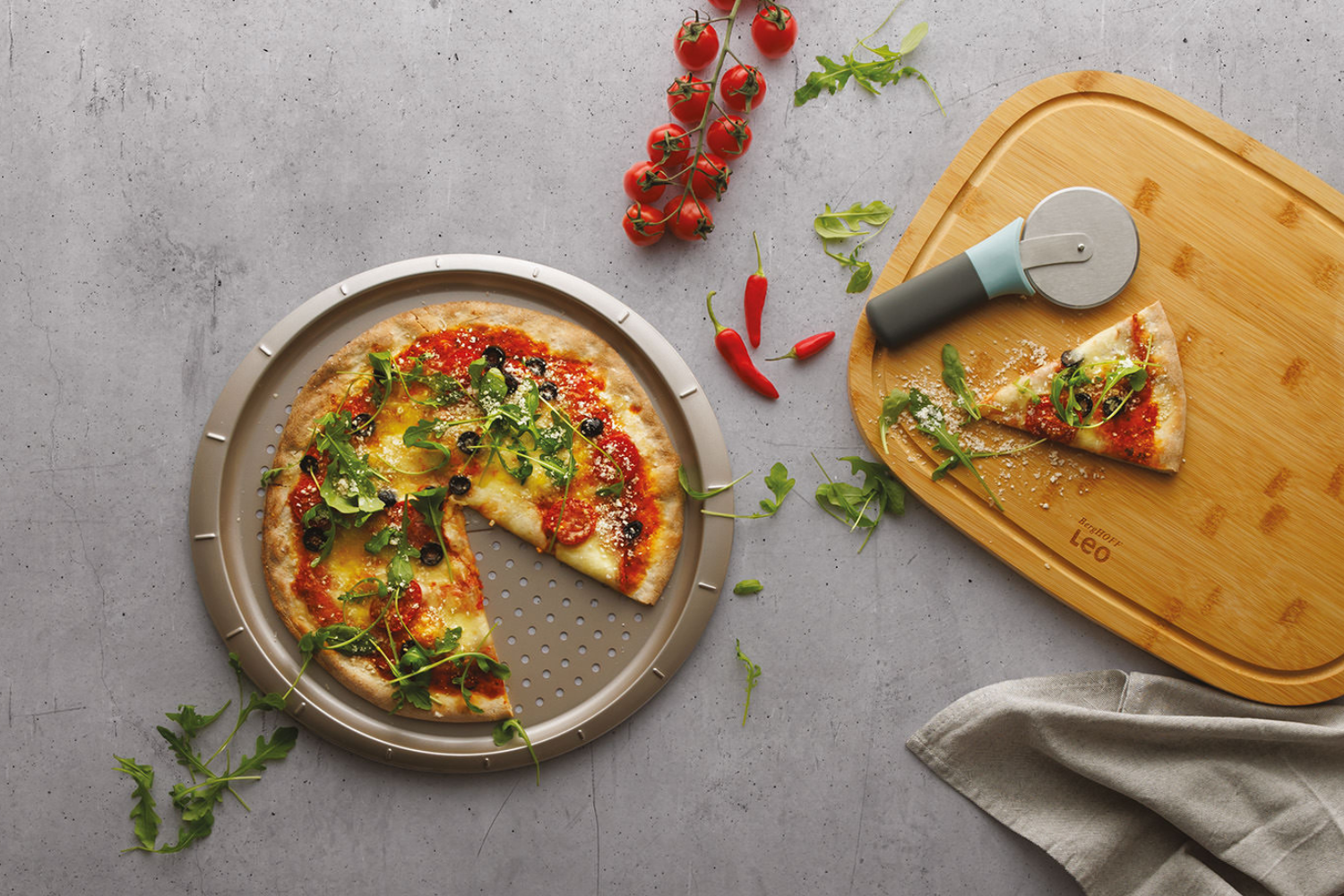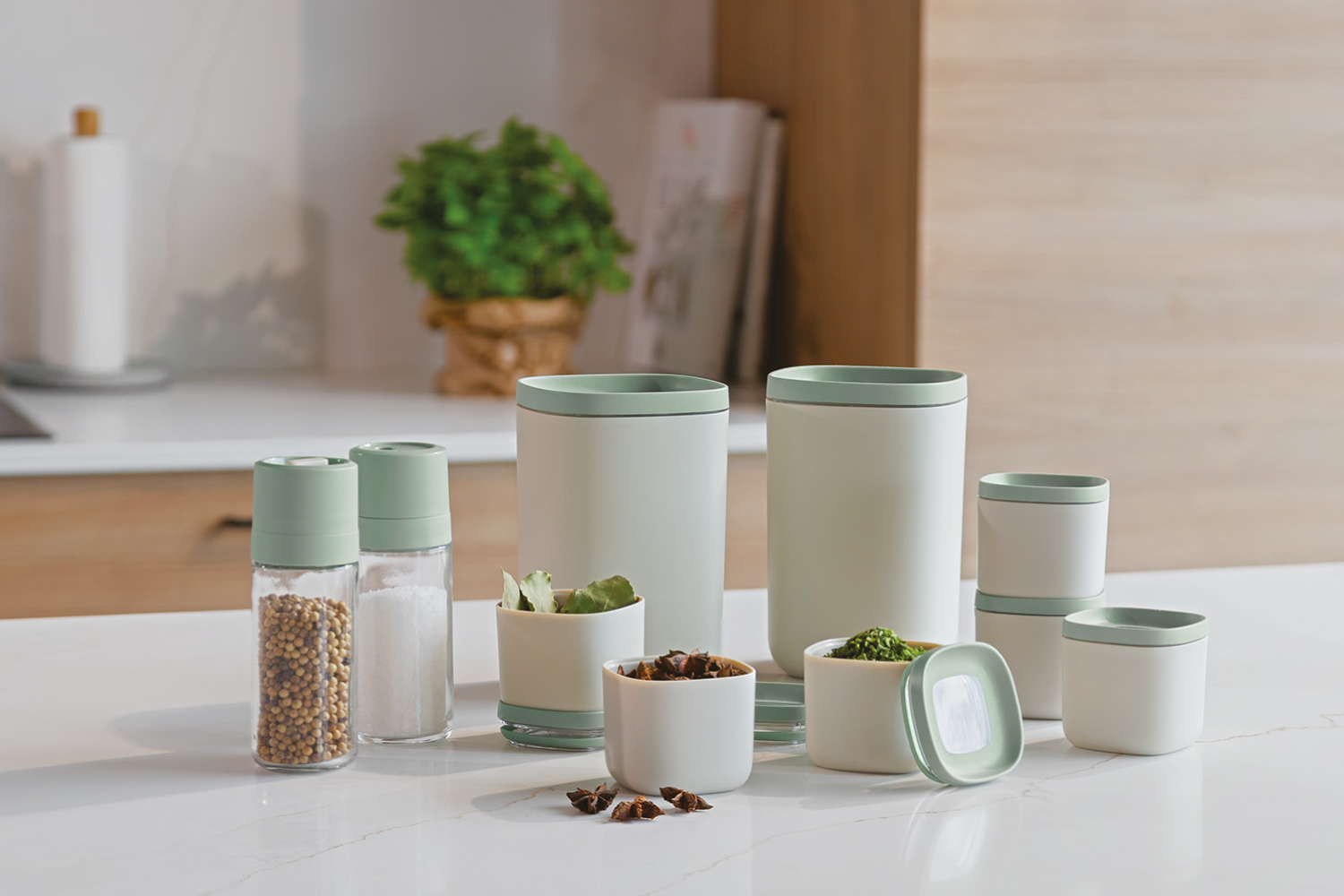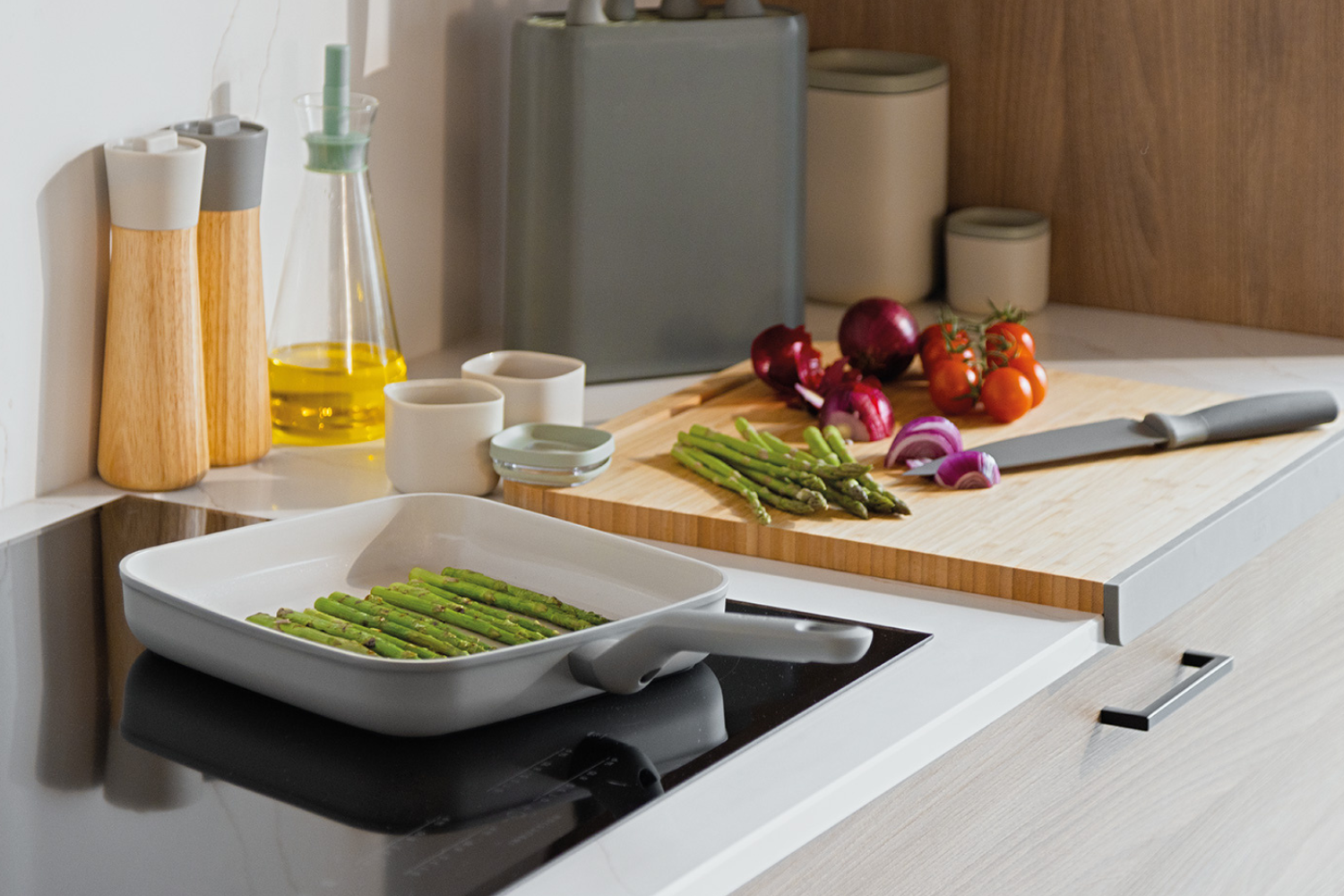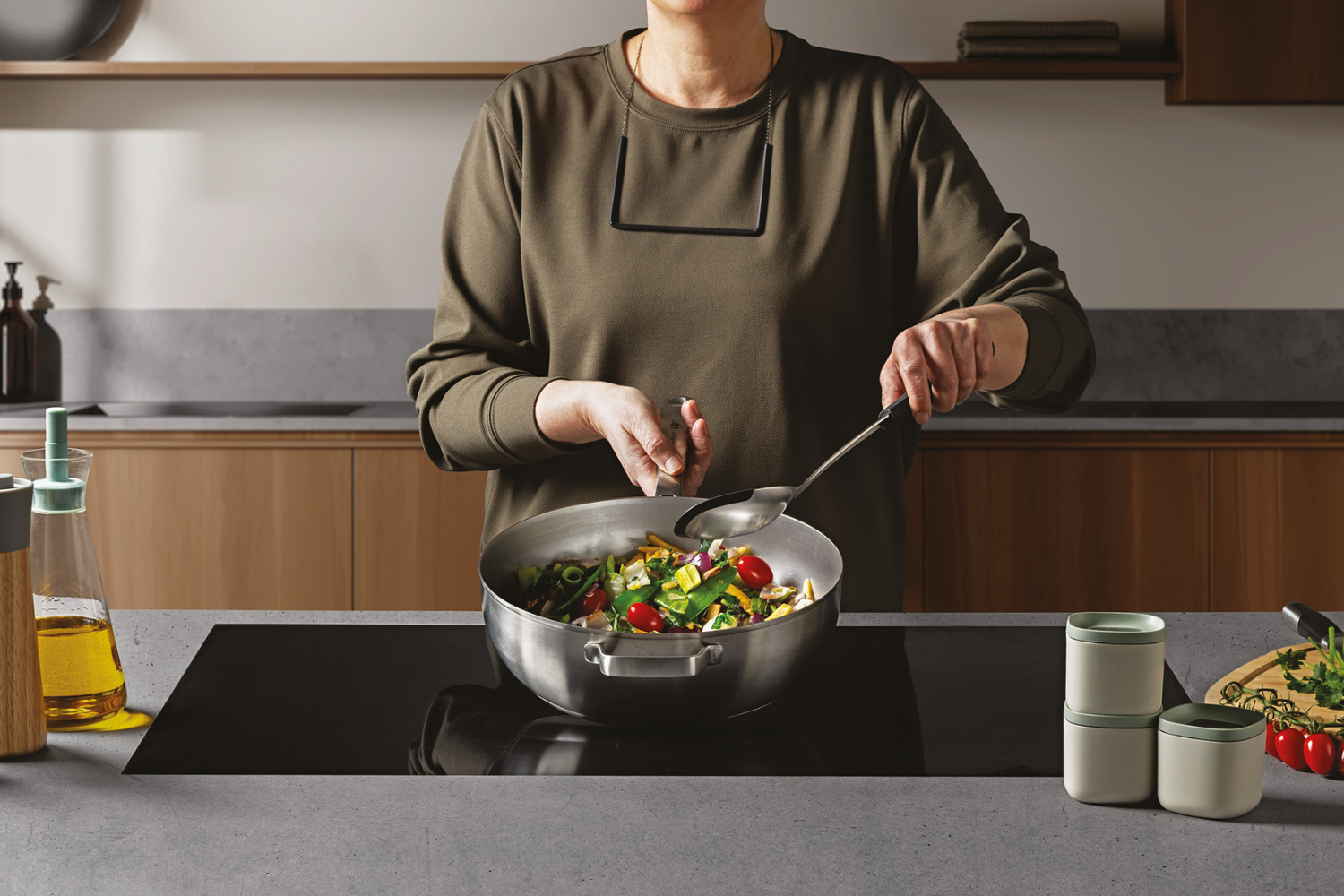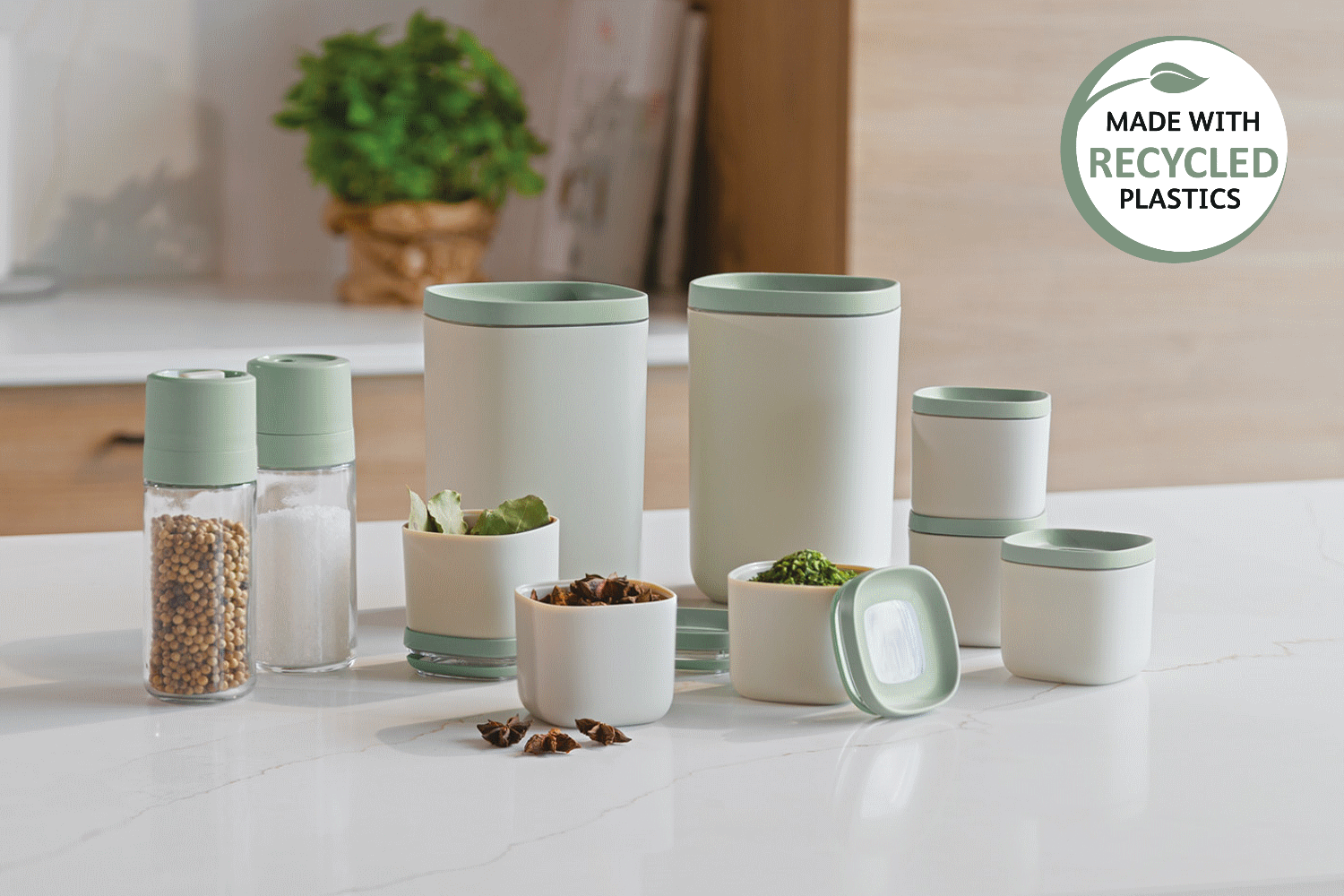
What about recycled materials: plastics
We often get questions from our customers regarding our kitchen -and cookware products made with recycled materials. Are the performance properties the same for recycled non-stick cookware as for regular non-stick cookware? Do recycled products have the same composition as the virgin alternative? Are products made with recycled materials food grade approved? Why are recycled products more expensive than regular non-recycled products?
To give you a proper answer on above questions we generated a complete recycling process story of the main body materials used for kitchen -and cookware such as stainless steel, aluminium and plastics. from collecting, to washing, to shredding and melting. Let’s dive into the world of recycling.
Recycled plastics: a flexible and sustainable alternative
A touch of green in your kitchen, wouldn’t this be nice? Meet our kitchenware products made with recycled plastics from pre- and/or post-consumer plastic waste. Our aim is to integrate recycled plastics into our products and in different product categories over the next years. We are talking about storage items, utensils, to go items, … Our recycled plastic kitchenware is designed to last a long time and at the end of their lifecycle they can be recycled all over again (SDG 12*: Sustainable consumption and production).
The recycling process
Recycling plastics is extremely important to reduce waste generation and increase sustainability. Recycling helps to deal with the huge amount of waste and to enhance circular economy and zero-waste systems.
Commonly used plastics such as PP, PE or PET are 100% recyclable. Multi-layered plastics however, are ‘hard-to-recycle’ materials and will therefore be treated like regular waste and often end up in landfill or incineration.
In general, we have two types of plastic scrap: pre-consumer plastic scrap is discarded plastic from manufacturers and factories and is the key resource for recycling suppliers. Post-consumer plastic scrap on the other hand is plastic waste that was used by consumers.
The first step in the recycling process of plastics is the collection of post-consumer materials from households, communities, and institutions. There are several types of plastics (PET, HDPE, PVC, LDPE, PS, and Others) which needs to be separated by recyclers. The next step is sorting by property such as colour, thickness and usage. Sorting plants have different processes such as vacuums, screen drums, wind canals separating based on weight and magnets to remove metal parts.
After sorting the waste will be washed in the recycling plant. Washing is a crucial step in the recycling process since it removes contamination (dirt, food residue or labels) that could ruin a batch of recycled plastic. The next step is shredding the plastic into smaller pieces. The smaller pieces of plastic can be used without further processing for applications, such as an additive in asphalt or simply sold as a raw material.
After shredding, the plastic pieces are tested to identify the class and quality. Using several tests (air classification/ floating classification) to determines the density and thickness of the plastic parts. This final step is melting the shredded plastic and create plastic recyclate pellets. These pellets are the main component for new plastic products made with recycled plastic.
In general, BergHOFF recycled plastic products are made with pre-consumer scrap and/or strictly identified and separated recyclate pellets from post-consumer scrap. To ensure our products have same quality standards and characteristics as virgin plastics some additives will be added to the recyclate pellets.
Monitoring and testing
As controlled recycled plastics and virgin plastics have the same quality and characteristics, our recycled plastic, is monitored in the same way as virgin plastic for production and food grade approval (item is tested according to the most stringent European standards for food contact materials and toxic substances).
Cost of recycled plastics kitchenware
Due to the complex recycling system as described above, the current cost of using recycled materials is higher than virgin materials. This difference in cost will mostly disappear in the future as collection, sorting and recycling become more efficient and virgin materials become scarcer. However, the advantages of recycled plastics compared to virgin materials are a reduction of the plastic waste stream and a reduction of CO2 emissions by up to 85%.
Read here more about recycled stainless steel and recycled aluminium.
* BergHOFF Worldwide is dedicated to making a positive impact on the planet and our stakeholders without compromising on quality or performance. By integrating the United Nations Sustainable Development Goals (SDGs) into our company strategy, we strive to embed sustainability into our mission, vision, product development, and packaging. More information about our commitment to sustainability and the integration of the SDGs can be found here: blogpost BergHOFF Worldwide x Charter of Sustainable Entrepreneurship of Voka Limburg. General information about the United Nations Sustainable Development Goals can be found here: https://sdgs.un.org/goals.

 Español - España
Español - España 










